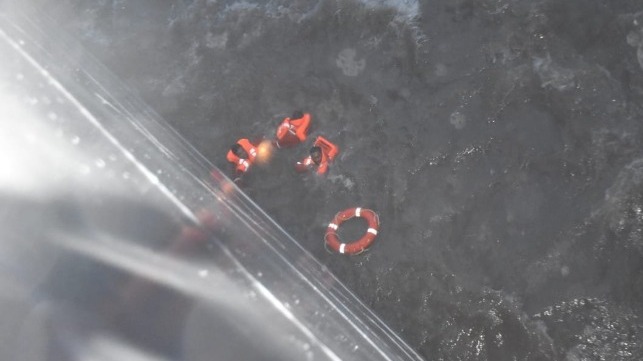Report: Captain of Lost Barge P305 Knew of Approaching Cyclone

Indian media outlets have published the first survivor accounts of the sinking of the accommodations barge P305 on May 17, including a detailed recounting by the ill-fated vessel's chief engineer.
Rahman Shaikh, 48, was serving as the floatel barge's top engineering officer on its final deployment. He told the Indian Express that the barge's master was aware of the cyclone well before its arrival, but he believed that its intensity would be far lower - just 25 mph, not the 110 mph-plus wind speeds recorded on the day of the casualty.
The cyclone's formation was predicted by computer weather models a week in advance, and the storm's dangerous track and growing intensity were known at least as early as the morning of May 16, according to warnings issued by the Indian Meteorological Department. On the morning of that forecast, the cyclone's epicenter was still located about 150 nm to the south of the Mumbai High oilfield, where P305 and her 261-man crew were deployed on contract to the Oil and Natural Gas Corporation. The forecast showed that Mumbai High was within the cone of uncertainty for the cyclone's track.
The Indian Coast Guard says that it sent its first warnings to mariners far earlier, with one on May 11 and another on May 13. Inspector General Anand Badola, the Indian Coast Guard's top west coast officer, told The Indian Express that his agency had ordered ONGC to clear its vessels from the area in advance of the storm. "Why the ONGC did not follow the intimation is a question it has to answer," he said.
The Very Severe Cyclonic Storm “Tauktae” over eastcentral
— India Meteorological Department (@Indiametdept) May 16, 2021
Arabian Sea about 190 km northwest of Panjim-Goa, 270 km
south-southwest of Mumbai, 510 km south-southeast of Veraval (Gujarat). It likely to intensify further during next 24 hours. pic.twitter.com/8ulWPqyTwS
P305 was one of several barges that were still on scene. "Many other vessels in the vicinity left. I told the captain, Balwinder Singh, that we must also leave for the harbor. But he told me that winds were not expected to be over 40 kmph and the cyclone would cross Mumbai in one or two hours," Shaikh told the Indian Express. “There was miscalculation on the captain’s behalf and also the company."
When the storm arrived, five of the barge's anchors failed and it drifted into an unmanned rig structure, leaving a large hole in the barge's hull. As flooding grew worse, the crew attempted to deploy the port side life rafts - but 14 out of 16 rafts were "punctured," Shaikh said. With few options, the majority of the crew went into the water with lifejackets and liferings.
So far, the Indian Navy has rescued 184 survivors and has recovered 49 bodies. An additional 26 personnel remain missing. The tugboat Varaprada also sank during the storm, with two rescued and 11 missing.
Indian Navy and Coast Guard SAR efforts continue day and night, and the search will not be called off for at least another three days, according to Indian Navy Commodore Ajay Jha.
India's Ministry of Petroleum and Natural Gas has set up a three-member panel to look into any "lapses and gaps" in safety that may have occurred in the run-up to the disaster, including questions of whether meteorological and regulatory warnings were heeded.
The Indian Coast Guard is now ramping up pre-emptive storm warning measures in the Bay of Bengal, where Cyclone Yaas is expected to form on Saturday. Yaas is expected to strengthen into a cyclone and make landfall in Odisha and West Bengal by May 26. Modeling suggests a peak intensity of 80 mph, according to the India Meteorological Department (IMD).
